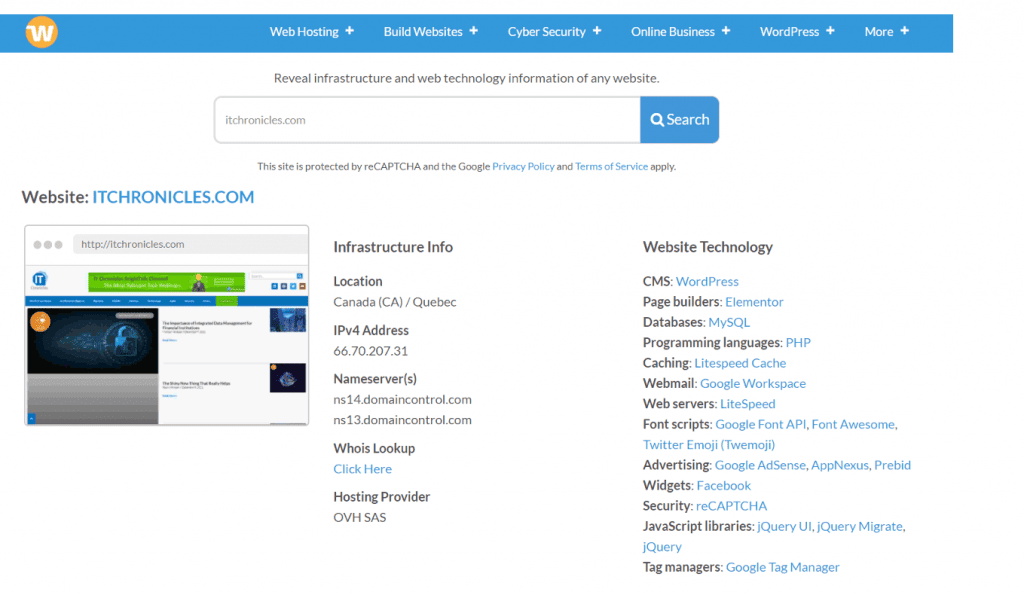One of the most popular content management systems, WordPress says its platform has over 400 million viewers monthly, visiting over 15 million pages. This number is staggering because the influence of WordPress can be compared to Google.
Table of Contents
ToggleTo name only a couple, TechCrunch, The Walt Disney Company, Rolling Stone, The New Yorker, and IT Chronicles all use the conveniences that WordPress has to offer.
However, it’s hard to keep the ecosystem of WordPress safe from hackers.
Cybercrime is anything but a joke. It has turned into a widespread business, and WordPress is one of the first website platforms hackers will attack.

There is absolutely nothing wrong with the WordPress platform itself. It is a wildly popular open-source ecosystem and contains an extensive userbase, making its vulnerabilities attractive to hackers.
Why do WordPress sites get hacked first?
A hacker usually is not targeting your WordPress website specifically. WordPress sites get hacked first because common vulnerabilities become a convenient shortcut for hacking.
The motive of hackers for attacking WordPress is simple financial growth. A hacker will appear where there’s sensitive information, such as details about a particular payment method. That’s why information security should become the top priority on your WordPress website.
Even if your website doesn’t contain sensitive information, it doesn’t mean that it’s safe from hackers. To understand this better, read further to learn what SEO spam and malware in WordPress aim to do.
SEO spam and malware in WordPress
According to GoDaddy, in 2019, more than 62% of client sites witnessed SEO spam. SEO spam comes from the malware category. The so-called “black hat SEO” uses illegal ways to boost rankings of malicious or spam websites, hijacking the link building of your website.
What happens is that they introduce spam content to your website, which can even redirect users from your website to links and pages that have no relation to it. In turn, if Google notices this, your site will be deemed not credible and get block listed.
Each business should update plugins and software, use CAPTCHA, install WAF (web application firewall), and keep track of backlink profiles to avoid getting blocked. The detailed list below, with six ways to stop all hacks, should help you solve every issue in this field and keep your WordPress secure.
Remember that hackers invest a lot of time in their skills and sometimes even create programs that aim at testing the vulnerabilities of WordPress. Once they’re in – they can do anything.
For this reason, it is always essential to look for the best tools to boost your SEO and marketing efficiency to prevent your business from facing drawbacks and losing money down the drain.
Six ways to prevent WordPress sites from getting hacked
The following six tips should help prevent spam content from getting introduced to your website and redirect users to pages unrelated to your website. Also, securing your WordPress with the six following tools should stop hackers from wreaking havoc on your WordPress platform.
Here are the plugins and hacks for countering the vulnerability of WordPress:
WordPress firewalls
WAFs (WordPress firewalls) are applications specifically customized to protect all instances of WordPress sites. The most reliable and prominent ones are Mal care, BBQ (Block Bad Queries), and Sucuri.
They are relatively new to the web industry but have proven to be efficient. WordPress firewalls mediate between two or more networks and control each of the traffic (both incoming and outgoing).
They become the barrier you need to protect WordPress from a non-trusted network. A firewall is typically installed between an internal network and an Internet connection to stop Internet attacks and to protect the network.
Two-factor authentication plugin
Adding a 2FA (two-factor authentication) gives you an additional layer of security for your login pages. It’s a WordPress plugin that adds an extra layer of protection to your user accounts and website by requiring each login and identity to be verified on the admin’s dashboard.
This plugin is easy to use and is wizard-driven – so it’s completed in just a couple of seconds. 2FA supports Duo Security, FreeOTP, Authy, Google Authenticator, and other 2FA apps.
2FA will protect all accounts since this plugin gives users a grace period to enforce 2FA. The beauty of this plugin is that it doesn’t require any technical assistance – every user can install it at their convenience.
If you want to strengthen security from the start, you can require all users to set the plugin instantly or otherwise be denied access to your website. Those that don’t configure it can be blocked – to avoid jeopardizing the safety of your website.
WordPress activity log plugin
The WP activity log plugin is the most comprehensive tool that monitors user activity and logs. It helps administrators keep track of what happens on their websites, and it’s the number-one-rated WP activity log plugin. This plugin will enable the following:
- Integrating all WordPress activity logs with Slack;
- Getting instant alerts on any essential changes;
- Generating periodic reports on the users’ site activity;
- Identifying all extraordinary activity before it gets to a malicious point;
- Ease of troubleshooting;
- Managing and monitoring the activity of each user.
New password policy
There are solid reasons behind the increased popularity of Password Managers. The more complex your password is – the safer you are on the Internet. Enabling strong password policies and enforcing the usage of only strong passwords with the Password Policy Manager will ensure the safety of your WordPress site.
Naturally, all users with too many wrong login attempts would automatically be blocked. These policies work well with custom login pages too.
File integrity monitoring
File integrity monitoring is a process that compares a particular file’s fingerprints to see whether it has changed. Software for checking file integrity creates a specific cryptographic hash, or in other words – a fingerprint – of each file in your system.
When the content changes – the fingerprint changes. When the software notices a difference in the fingerprint, it alerts the administrator.
Online backup services for WordPress
In case the software or the hardware fails – you’ll need an appropriate backup strategy. All WordPress blogs and websites should have a backup for numerous other reasons. Yes, for cases of a breakdown, but for WordPress hack attacks too.
The online WordPress backup service is probably the most reliable, cost-effective, and secure solution for data backup.
Conclusion
Hacking is no taboo topic – especially when it comes to vulnerable websites such as WordPress. Staying up to date on the best plugins and solutions to all hack-related problems mentioned above is essential if your company operates with WordPress.
Yes, there are vulnerabilities, but WordPress is a very safe and user-friendly platform. It’s a platform that creates essential tools you need to create a WP website available to any user – not just to web developers who have a lot of experience.
These tools can support both small and large sites, using various features such as plugins and themes designed to extend the functionality WordPress offers. In conclusion, we can say that WP works well for all kinds of sites and is safe if you follow some basic guidelines.





